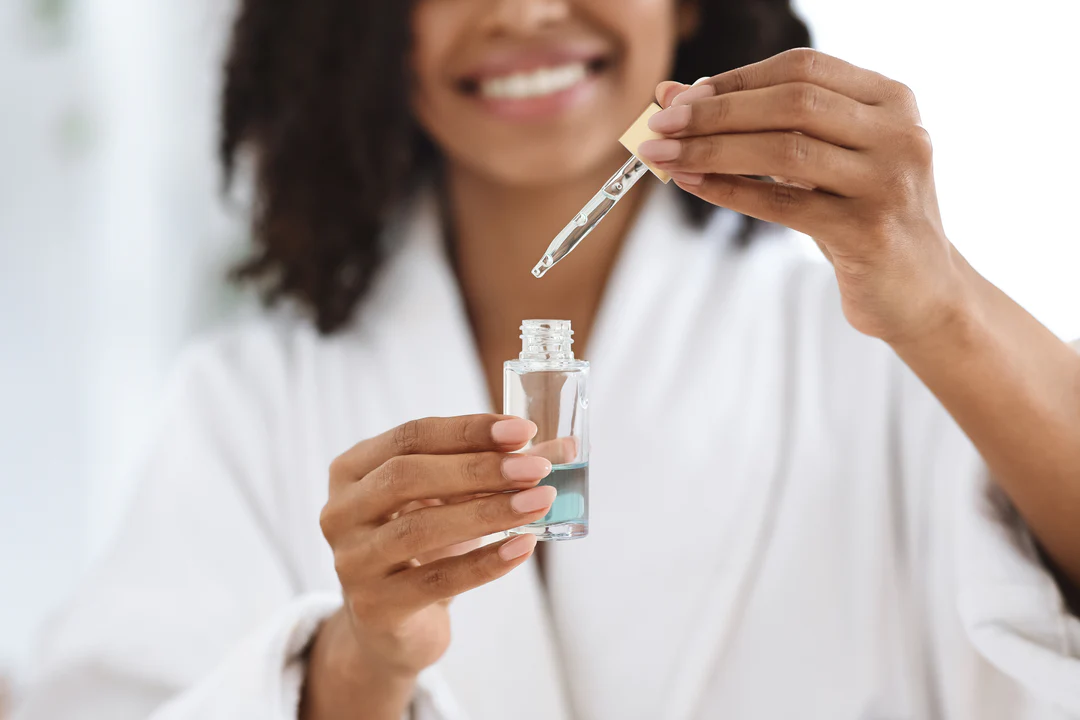**Can You Mix Azelaic Acid and BHA?**
When it comes to skincare, combining different actives can be a bit of a balancing act. With ingredients like **Azelaic Acid** and **BHA** (specifically **Salicylic Acid**), both offering powerful benefits, it’s natural to wonder if you can use them together without causing irritation or diminishing their effectiveness.
### What is Azelaic Acid?
Azelaic acid is a naturally occurring acid derived from grains like barley, wheat, and rye. It’s often praised for its versatility and gentle exfoliating properties. Key benefits include:
– **Reducing hyperpigmentation**: Azelaic acid helps fade dark spots, melasma, and post-acne marks.
– **Preventing acne**: It unclogs pores, controls excess sebum, and kills acne-causing bacteria.
– **Soothing inflammation**: It’s known for its anti-inflammatory properties, which help calm redness and conditions like rosacea.
– **Exfoliation**: While not classified as an AHA or BHA, azelaic acid still sloughs off dead skin cells to reveal a smoother complexion.
### What is BHA (Salicylic Acid)?
Salicylic acid is the most common BHA (beta-hydroxy acid), and it’s oil-soluble, meaning it can penetrate deeply into the pores to exfoliate and clear out buildup. Benefits of BHA include:
– **Unclogging pores**: Salicylic acid is excellent at dissolving oil and debris trapped in pores, preventing blackheads, acne, and breakouts.
– **Exfoliating the skin**: It helps to remove dead skin cells from the surface, revealing fresher skin.
– **Reducing inflammation**: It’s particularly effective in calming inflammatory skin conditions like acne, reducing redness, swelling, and irritation.
### Can You Use Azelaic Acid and BHA Together?
**Yes, but with caution.** Both azelaic acid and salicylic acid are excellent for treating acne, uneven skin tone, and skin texture, but they work in slightly different ways. Azelaic acid primarily works on the surface of the skin, while salicylic acid can penetrate deeper into the pores.
While it is safe to use both ingredients, **you should not layer them directly on top of each other**. Mixing them together or applying them too close together in your routine can lead to irritation, increased skin sensitivity, and discomfort.
### How to Safely Incorporate Azelaic Acid and BHA in Your Routine:
To avoid irritation, it’s best to **space them out** in your routine. Here are two effective ways to combine these two ingredients:
#### 1. **Alternate Day Usage**
You can use **azelaic acid on one day** and **salicylic acid on the next**. This gives your skin a chance to absorb and work with each ingredient without overwhelming the skin barrier.
– **Morning**: Use azelaic acid in the morning for its brightening and anti-inflammatory benefits.
– **Evening**: Use salicylic acid in the evening to exfoliate and prevent clogged pores, particularly if you’re dealing with acne.
#### 2. **Time-Based Usage**
If you prefer to use both ingredients in the same day, you can **apply azelaic acid in the morning** and **salicylic acid in the evening**. This gives your skin time to adjust to each active’s pH level and reduces the chances of irritation.
### Why Not Mix Azelaic Acid and Salicylic Acid?
The reason you should avoid mixing azelaic acid and salicylic acid directly comes down to **skin irritation**. Here’s why:
– **Penetration Depth**: Salicylic acid works deeper in the pores, whereas azelaic acid operates more on the surface. When used together, the combination of deep pore penetration (salicylic acid) and surface exfoliation (azelaic acid) can cause over-exfoliation and irritation.
– **Acid Overload**: Both are acids, and using them too closely together can lead to excessive exfoliation. This can strip the skin of its natural oils, weaken the skin barrier, and lead to dryness, redness, or sensitivity.
### What Should You Not Mix with BHA?
There are several ingredients that shouldn’t be mixed with BHA (salicylic acid) to avoid irritation and optimize results:
1. **AHAs (Alpha-Hydroxy Acids)**: Combining BHA with AHAs like glycolic or lactic acid can be too harsh for the skin. Both AHAs and BHAs exfoliate the skin, so using them together can result in over-exfoliation, irritation, and a compromised skin barrier.
2. **Retinol/Retinoids**: Both BHA and retinol are potent ingredients that can lead to excessive dryness and irritation if used together. It’s best to alternate them to avoid sensitivity.
3. **Niacinamide**: While niacinamide is a great ingredient for soothing and repairing the skin, its optimal pH range (around 5-7) can interfere with the effectiveness of AHAs and BHAs, which have a more acidic pH. Using them together may reduce their efficacy.
### Can You Mix Azelaic Acid and Salicylic Acid?
As mentioned earlier, **it’s not recommended to use azelaic acid and salicylic acid together**. Mixing these two acids can be irritating for the skin due to their different mechanisms of action. Azelaic acid works on the surface of the skin, while salicylic acid penetrates deeply into pores. Using them in tandem can cause over-stimulation of the skin, resulting in redness, irritation, and increased sensitivity.
### How to Safely Incorporate Azelaic Acid and Salicylic Acid into Your Routine:
If you’re determined to use both ingredients in your skincare routine, here’s the safest way to do so:
– **In the Morning**: Start with **azelaic acid** in your morning routine. It’s great for brightening and calming the skin without disrupting the skin barrier.
– **In the Evening**: Use **salicylic acid** in the evening to tackle clogged pores and prevent breakouts. Since it penetrates deeply into the skin, it’s best to use it at night when your skin isn’t exposed to the sun (since salicylic acid can make the skin more sensitive to UV rays).
Be sure to always apply a broad-spectrum **SPF 30 or higher** during the day, as both acids can increase your skin’s sensitivity to the sun.
### Conclusion
In short, **azelaic acid and salicylic acid (BHA)** can be used in the same skincare routine, but they should be **applied at different times of the day or on alternate days** to prevent irritation. Layering them directly on top of each other isn’t recommended, as this can lead to increased sensitivity and discomfort. Always introduce new ingredients slowly into your routine, and if you’re ever in doubt, consider consulting with a dermatologist or skincare professional to tailor your routine to your skin’s needs.
For more tips and updates, don’t forget to follow us on **Instagram** and reach out to our experts for personalized advice!
DQH Knowledge drop: In your 20s, your skin cell turnover decreases. (Cell turnover is a key component in keeping your skin youthful.) You know what else slows down? Your collagen production. Starting in your 20s, collagen decreases by about 1 percent per year. Should you want to prevent fine lines and wrinkles, start by eliminating behaviors that contribute to premature aging. “If it’s bad for you, it’s bad for your skin,” says dermatologist Michel Somenek.
“Cigarette smoking reduces blood flow to the skin and causes premature wrinkling and a dull skin texture. Making the repeated pursed motion to inhale can also cause smoker’s lines. Alcohol and recreational drugs are toxins for the skin that damage its cellular structure and DNA,” Somenek tells us. “The faster you eliminate vices while you are young, the better chance your skin and body have to recuperate.” Also, adopting an anti-aging routine in your 20s is key. After all, the best offense is a good defense. We spoke to Somenek and experts Joshua Ross and Audrey Kunin to find out more.
Keep reading for the best anti-aging products for your 20s, according to skincare professionals.
Sunscreen
“We all know that the sun is the number one cause of skin aging and starting the prevention in your 20s is very important,” Ross says. “The majority of your sun damage won’t start to appear until you’re in your 30s, so don’t wait until you see it surface or you’ll be behind the curve. Stay ahead of it with a good-quality zinc-based sunscreen worn daily.”
Farmacy Green Defense Daily Mineral Sunscreen
An invisible sunscreen with SPF 30, plus botanical extracts meant to protect skin with tons of antioxidants. Bonus: It’s clean and fine to use under makeup.
Bareminerals Complexion Rescue™ Tinted Moisturizer Broad Spectrum SPF 30
Although we recommend you use your SPF and moisturizer separately, we also understand moments when you don’t have time or energy for that extra step. For those times, this bareMinerals moisturizer is a great thing to have on hand.
Vitamin C Serum
“A great introduction to anti-aging is to start with a vitamin C serum in your morning skincare routine,” Ross says. “It’s a powerful antioxidant that will neutralize free radicals and brighten the skin.” He adds that it’s a great way to counteract the effects of the sun’s harmful rays, which, as previously mentioned, are among the biggest causes of premature aging.
Drunk Elephant C-Firma™ Vitamin C Day Serum
The Drunk Elephant C-Firma is a lightweight serum that promises to give skin a glow by combining the brightening powers of vitamin C with ferulic acid, l-ascorbic acid, and vitamin E. The included sodium hyaluronate is meant to replace hydration loss, so you shouldn’t have to deal with any irritation.
Sunday Riley C.E.O. Rapid Flash Brightening Serum
This potent serum is jam-packed with vitamin C (15 percent, to be exact), which means it’s a potential superstar at both brightening skin and dousing it in antioxidants.
Peptides
Using peptides on your skin has many benefits, says Somenek. “The skin barrier is what defends the body against pollution, UV rays, bacteria, and toxins. It can be damaged by several everyday factors. Using topical peptides aids in building a stronger barrier,” he says. “Peptides comprise elastic fibers, which are a type of protein. These fibers help to make skin appear taut and firm. Peptides can also help repair damaged skin, relieve inflammation, and even out skin tone. Some peptides can kill acne-causing bacteria that is common in 20-somethings.”
Kunin agrees, saying, “Peptides are an excellent entry point for supporting collagen.” She recommends looking for face and eye treatments that contain these collagen-boosting powerhouses.
Charlotte Tilbury Magic Eye Rescue Cream
This Charlotte Tilbury super-emollient eye cream has a base of coconut oil and shea butter (read: it’s incredibly hydrating). Botanicals plus peptides are meant to help reduce dark circles and boost collagen, respectively.
This creamy moisturizer serves up potent collagen-boosting peptides and pycnogenol, and antioxidant-rich vitamin C. “Instead of sitting on top of the skin, peptides penetrate the outer layer so they go deep. The ‘signals’ they send tell the cells to produce elastin and collagen, which are needed for youthful-looking skin,” explains Somenek.
At-Home Peel Pads
Remember that skin cell turnover fiasco we talked about earlier? One way to help support it is by exfoliating. “Exfoliation is important to help keep skin fresh and luminous,” Kunin says. She recommends using at-home peel pads as an easy and effective way to exfoliate.
“The goal in your 20s is to fight the slowing pace of cell turnover. It is wise to use products that gently exfoliate, yet still remove oil and other impurities. Products that have Alpha Hydroxy Acids (AHA) or Beta Hydroxy Acids (BHA) are a good choice.”
According to Somenek, you should only exfoliate two to three times a week. “People of all ages are guilty of over-exfoliating and that can be too much of a good thing,” he says.
Dermadoctor Kakadu C Intensive Vitamin C Peel Pad
A few swipes of this Derma Doctor powerful peel pad promise to leave your skin glowing and smooth, thanks to the seven (yes, seven) types of chemical exfoliants, including AHA and BHA. It also contains vitamin C via Kakadu plum extract for added brightening and antioxidant protection.
KEY INGREDIENTS Kakadu plum extract is sourced from the Kakadu plum, a fruit grown in northern Australia. It contains vitamin C, which restores the skin’s natural barrier, increases collagen production, and soothes irritation.
Dr. Dennis Gross Skincare Alpha Beta® Universal Daily Peel Pads
These are the gold standard of peel pads, with a cult following and over 900 five-star reviews on Sephora. They’re easy to use and contain a blend of anti-aging exfoliating acids.
Emollient Night Cream
“In your 20s, you need to start upping the hydration in your skincare routine. You may have been cautious of over-moisturizing because of acne in your teens, but as you enter your 20s, your skin transitions and becomes drier,” Ross says. “I recommend an emollient night cream added into your evening skincare regimen.”
“Twenty-somethings need to make sure that they are not using creams that will clog their pores and cause excess oil production,” says Somenek. Opt for non-comedogenic products.
Cerave Skin Renewing Night Cream
One great choice is the CeraVe Skin Renewing Night Cream, which is a non-comedogenic night cream that leaves skin soft and glowy. It combines the moisturizing powers of ceramides and hyaluronic acid.
RoC Retinol Correxion Max Hydration Creme
“The best night cream ingredients contain retinol, benzoyl peroxide, and/or salicylic acid or hyaluronic acid. The goal is to moisturize, yet remove excess oil,” says Somenek. This Roc Retinol Correxion cream fits the bill as it contains both hyaluronic acid and retinol so it promises to moisturize while also being non-comedogenic.



